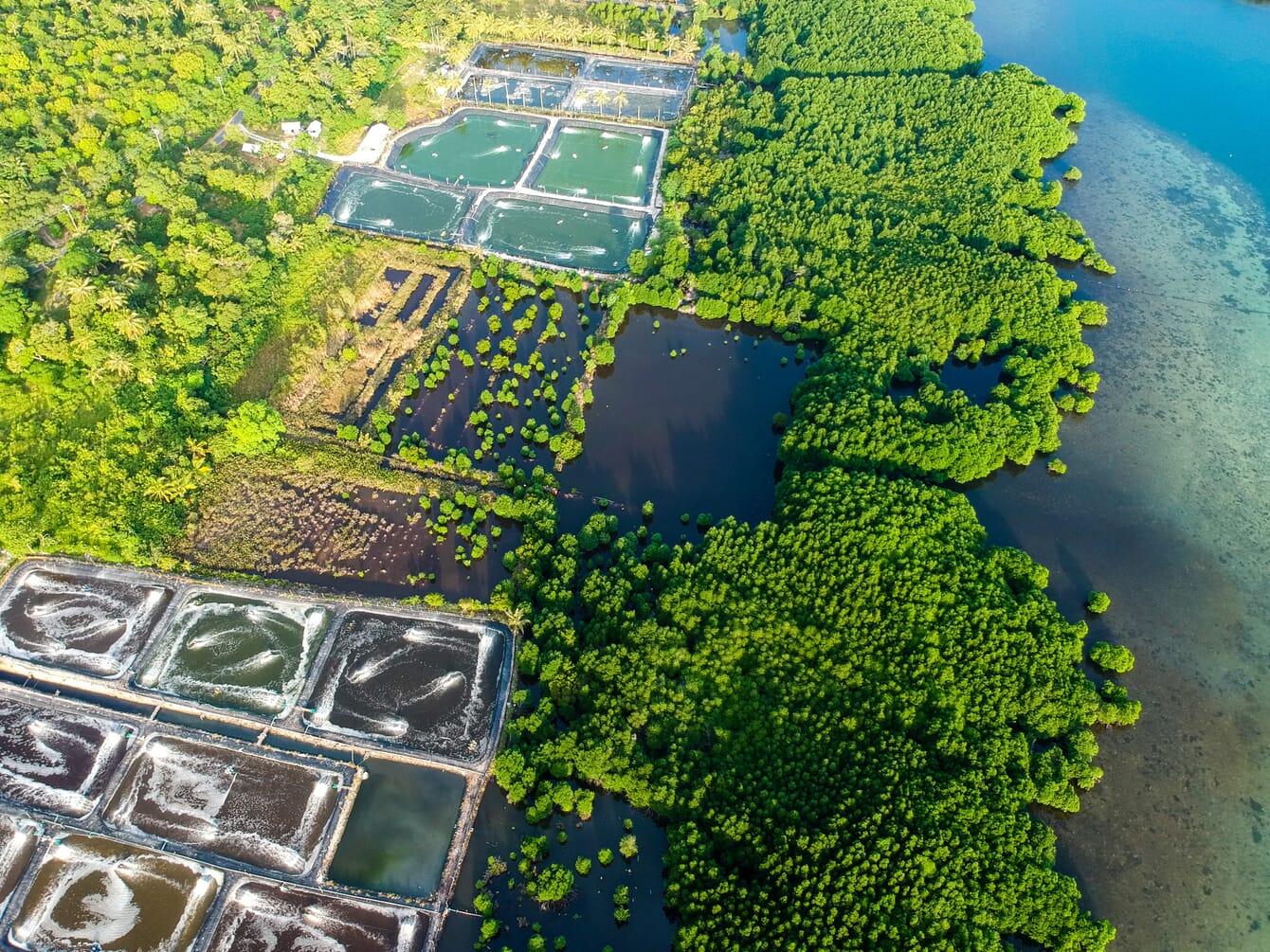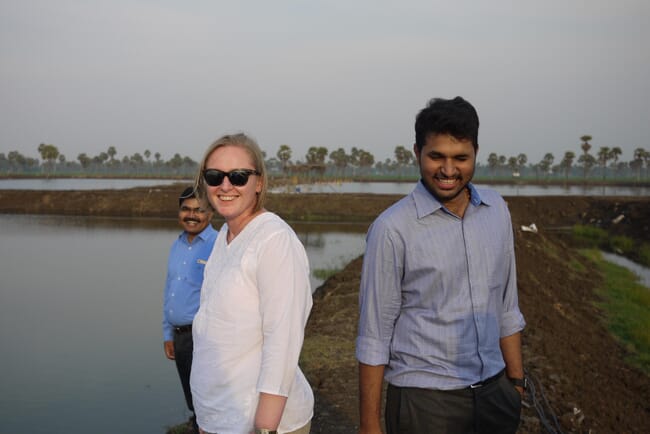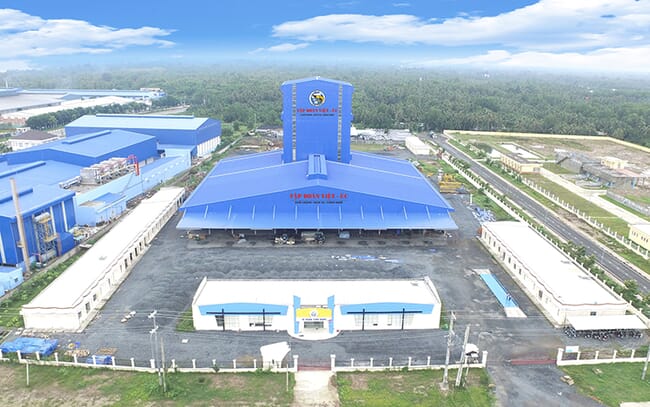
The forum will include a discussion of whether mangrove reforestation in and around shrimp ponds is the best way to sink CO2
Organised by the ASC’s Esther Luiten, following the popularity of a shorter session on the topic last year, the morning session will cover a number of increasingly pressing topics.
“We’re aiming to build a shared knowledge base of what greenhouse gas emissions are in the shrimp supply chain – what do we know, where are the hotspots, where are the uncertainties. And, more importantly, get people to a level of understanding where they can take actions themselves,” notes Luiten.
The session will be chaired by Dr Darian McBain, formerly chief sustainability officer at Thai Union and then the Monetary Authority of Singapore, who has since founded and become CEO of Outsourced Chief Sustainability Officer Asia.
“Many in the financial sector, from banks and insurers to investors, have made commitments to net zero emissions targets. Shrimp producers will start to feel the pressure to reduce their carbon footprint from a number of fronts – including finance, retail and buyers, as well as consumers. They also may have to manage the risks posed by the physical impacts of climate change, like extreme weather events and supply chain disruption,” McBain reflects.
“I’ll explain how it can be beneficial for producers – by de-risking investments, and improving supply chain dynamics. The current economic climate is not the best at the moment so it’s important to focus on how it can work out for producers from an economic perspective. But it’s also important to look along the supply chain, to get importers on board and to collaborate with the feed companies,” she adds.

Dr McBain will be chairing a climate session at this year's Global Shrimp Forum
The main sources of shrimp emissions
ASC’s lifecycle analysis (LCA) specialist Rob Parker will kick off the session by presenting an overview of the sector’s main sources of emissions, together with Dave Robb of Cargill, on behalf of the IDH Aquaculture Working Group.
“Shrimp might be more climate-friendly than other forms of protein, but if you compare it with other seafood there are quite a number of challenges,” notes Luiten.
As one of the main sources of emissions in most shrimp supply chains, it’s no surprise that feed is going to be one of the session’s key topics, with representatives from both Skretting and Cargill speaking about some of the ways they are looking to reduce GHG emissions in their shrimp diets.
“Skretting have shrimp feed mills in Ecuador and Vietnam so they can compare challenges and opportunities across regions, highlight different responses from producers and also explain how they work with producers to make it meaningful and effective for them,” Luiten explains.

Depending on intensity of production system, feed tends to account for 50-70 percent of shrimp emissions, within the feed and farming parts of the value chain. The proportion is lower if factors like transport and processing are factored in
The role of retail
The retail sector will also be represented.
“In retail, like in feed, we see an increasing number of net zero commitments being published. They are wanting to take action to reduce GHG emissions and shrimp won’t get a free pass. And it’s also interesting to see how retailers are working with their suppliers,” Luiten notes.
The session will also highlight two initiatives which demonstrate that reducing GHG emissions can directly benefit shrimp producers. The first will be by GPS Group, which has been involved in a project to expand Ecuador’s electricity grid, in order to reduce remote shrimp farmers’ reliance on diesel generators, thereby reducing producers’ costs as well as their footprints.

The second will focus on how Thai Union is helping their shrimp suppliers in Thailand to invest in solar panels, pond liners and a range of on-farm efficiency measures in order to reduce their own emissions and their production costs, while also helping them expand their market reach.
“Two US retailers have committed to back up the investment at the primary production level,” Luiten notes.
The seafood giant has also included climate targets – such as reduction of their suppliers’ scope 3 emissions – in its procurement strategy, offering direct purchase possibilities and longer-term contracts as an incentive for the producers.
The session will also feature a guest speaker from the flower sector.
“There are similar initiatives in the flower industry, where buyers are working with their suppliers, providing conditions on contracts and also investment opportunities for reducing emissions,” Luiten reflects.

© Selva Shrimp
Shrimp farms and blue carbon
The session will be rounded off with a discussion on blue carbon – a topic that causes excitement and uncertainty in equal measure – led by Dane Klinger of Conservation International.
“We’re keen to bust some of the myths around blue carbon, and will also give an outline of what’s happening in that space,” explains Luiten.
Topics will include a discussion of whether mangrove reforestation in and around shrimp ponds is the best way to sink CO2 and whether blue carbon finance can generate additional income for shrimp farmers.
“Shrimp farming companies and NGOs are increasingly looking into mangrove reforestation – it can help shrimp producers contribute to nature restoration, carbon sequestration and create a good story for your consumers. That’s why we want to build an understanding of when it is effective and can the carbon capture be verified,” Luiten notes.
“It has huge potential, but it’s our job at the forum to bring the insights together and share the understanding between the industry and inspire the audience to see what they could do themselves,” she concludes.






